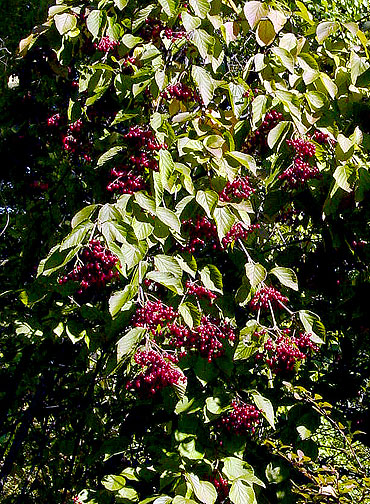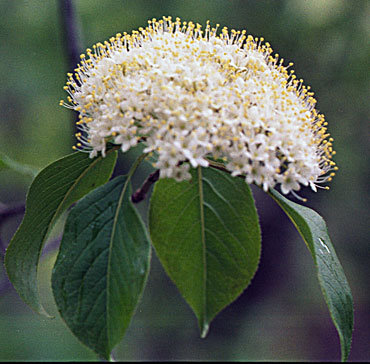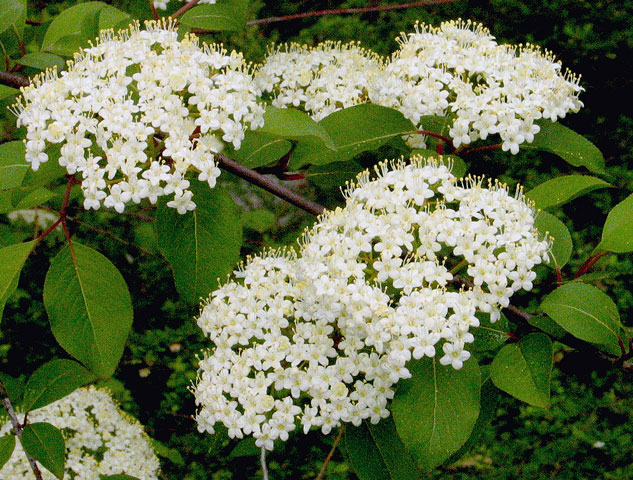Panicles of flowers about 2-5" across occur at the tips of young shoots; they are slightly dome-shaped above and sessile. Each flower is about ¼" across, consisting of a white corolla with 5 spreading lobes, a light green calyx with 5 teeth, 5 exserted stamens, and a light green pistil with a short style. The lobes of the corolla are oval-shaped, while the teeth of the shallow calyx are triangular-shaped. The stamens have white filaments and yellow anthers. During the blooming period, the branches and pedicels of each panicle are light green, terete, and glabrous (or nearly so); the pedicels of individual flowers are up to ¼" long. The blooming period occurs during late spring for about 2 weeks; the flowers are fragrant. Afterwards, the flowers are replaced by drupes that become mature during late summer or autumn. At this time, the branches and pedicels of the inflorescence turn red. Mature drupes are 6-10 mm. long, ovoid in shape, and dark blue-violet. The fleshy interior of each drupe is somewhat juicy and sweet, tasting like a raisin or date. Each drupe contains a single hard seed (or stone) that is flattened-ovoid in shape and dark-colored. The woody root system is shallow and spreading, often forming clonal offsets. The deciduous leaves of this woody plant become orange, maroon, or dark red during the autumn.


This woody plant is either a multistemmed shrub or single-trunk tree up to 25' tall (usually the former, rather than the latter). The crown consists of ascending branches that have a tendency to arch, while the trunk (if present) is up to 8" across. Bark of the trunk or older lower branches is rough, somewhat scaly, and reddish gray to gray. Smaller branches and twigs are gray, light brown, or light purple; they are smooth with scattered lenticels (air pores). Young shoots are light green, terete, and glabrous. Pairs of opposite deciduous leaves occur along the young shoots and twigs. These leaves are 2-4" long and 1-2" across; they are ovate in shape and serrated along their margins. The leaf bases are rounded to broadly wedge-shaped, while the leaf tips taper abruptly, becoming long and slender. The upper leaf surface is yellowish green, medium green, or dark green, while the lower leaf surface is pale green; the upper surface is glabrous, while the lower surface is glabrous to sparsely hairy. The petioles of the leaves are ½–¾" long, light green (sometimes tinted red or yellow), and glabrous to hairy. When hairs are present, they are rust-colored or brown. The petioles are also narrowly and irregularly winged.
 Nannyberry or
Nannyberry or